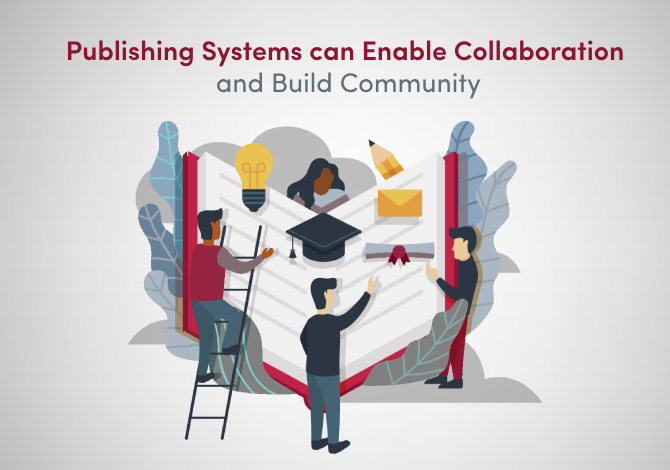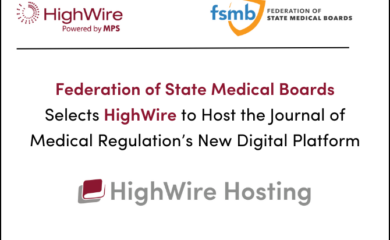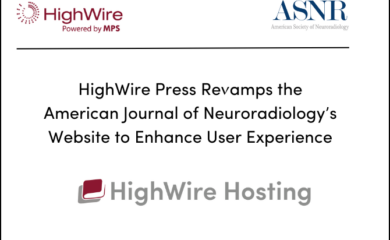The SSP 2024 Industry Breakout Session titled “Publishing Systems Can Enable Collaboration and Build Community” took place on Wednesday, June 5 at the SSP Annual Meeting. The session highlighted the collaborative efforts and technological advancements in scholarly publishing, emphasizing the role of community and trust in enhancing publication processes. Presenters included Tony Alves from HighWire Press, Chris Shillum from ORCID, Dukhbhanjan Sujlana from Convey, Yvonne Campfens from OA Switchboard, Hylke Koers from STM Solutions, Jessica Thibodeau from Copyright Clearance Center, and Oleg Ruchayskiy from Prophy Science. Following is Tony’s write up of that session.
“Publishing Systems Can Enable Collaboration and Build Community”
The publishing process has become a highly automated ecosystem, where advanced online workflow systems efficiently manage the coordination and communication among authors, editors, reviewers, and other professionals. These platforms foster collaboration among various entities supporting scholarly research, including nonprofits that establish industry standards and commercial companies that introduce innovative products. This integration of technology streamlines workflows, supports the infrastructure of the scholarly community, and significantly accelerates the time from manuscript submission to publication.
It was a great honor to have some of the most important and innovative organizations participate in my session, providing their view on the importance of enabling collaboration and building community through publishing systems. Tools like ORCID and Ringgold play crucial roles in linking people, places, and financial resources, enhancing connectivity within the community. Services such as the OA Switchboard facilitate funding recognition, while initiatives like the STM Research Integrity Hub and AAMC’s Convey bolster trust in science by identifying potential research fraud. Moreover, companies like Prophy contribute by diversifying editorial boards, helping to alleviate the peer review crisis. Together, these elements of a modern automated workflow create a more cohesive, accessible scholarly community, ensuring that research is disseminated efficiently and with integrity.
I kicked off the session with an introduction outlining the various stakeholders in the scholarly community. The scholarly community is a virtuous circle, each individual player has a role in building and facilitating knowledge and scholarship, be they a researcher, an institution, a funder, or a publisher. Even the general public, who both help fund our endeavor as well as benefit from the fruits of our labor, are part of this circle. Holding all of these constituents together, enabling the work that each member of this vital and virtuous circle is engaged in, are technology systems that facilitate workflow and provide access to innovative tools. Systems like HighWire’s new DigiCorePro, streamline the publishing process from article conception to scholarship dissemination, bringing multiple players into a common environment, for the benefit of the researcher and the reader.
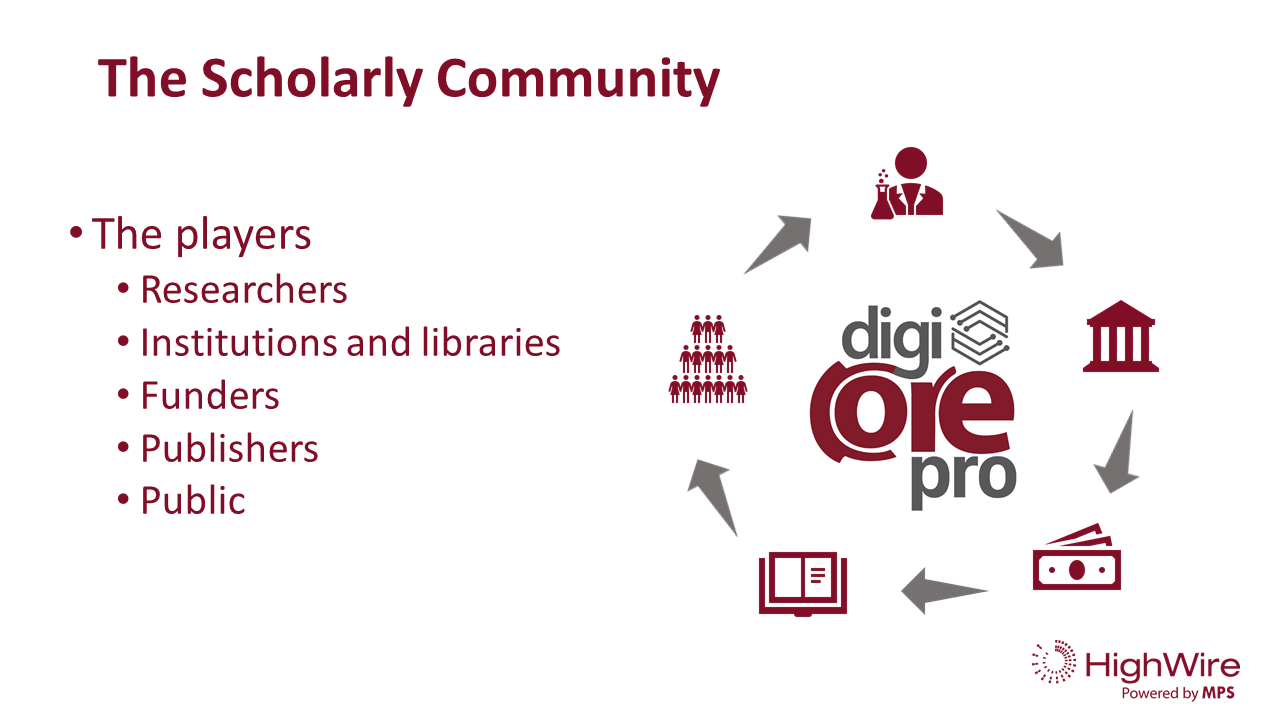
I emphasized the importance of organizations that create and manage industry standards, persistent identifiers, and shared services. Our community is vast, with many different organizations working together to create rules and standards that allow people and machines to collaborate, communicate, evaluate, and preserve scholarship. Many of these organizations are non-profit, volunteer led, and rely on funding from the scholarly community to fulfil their missions.
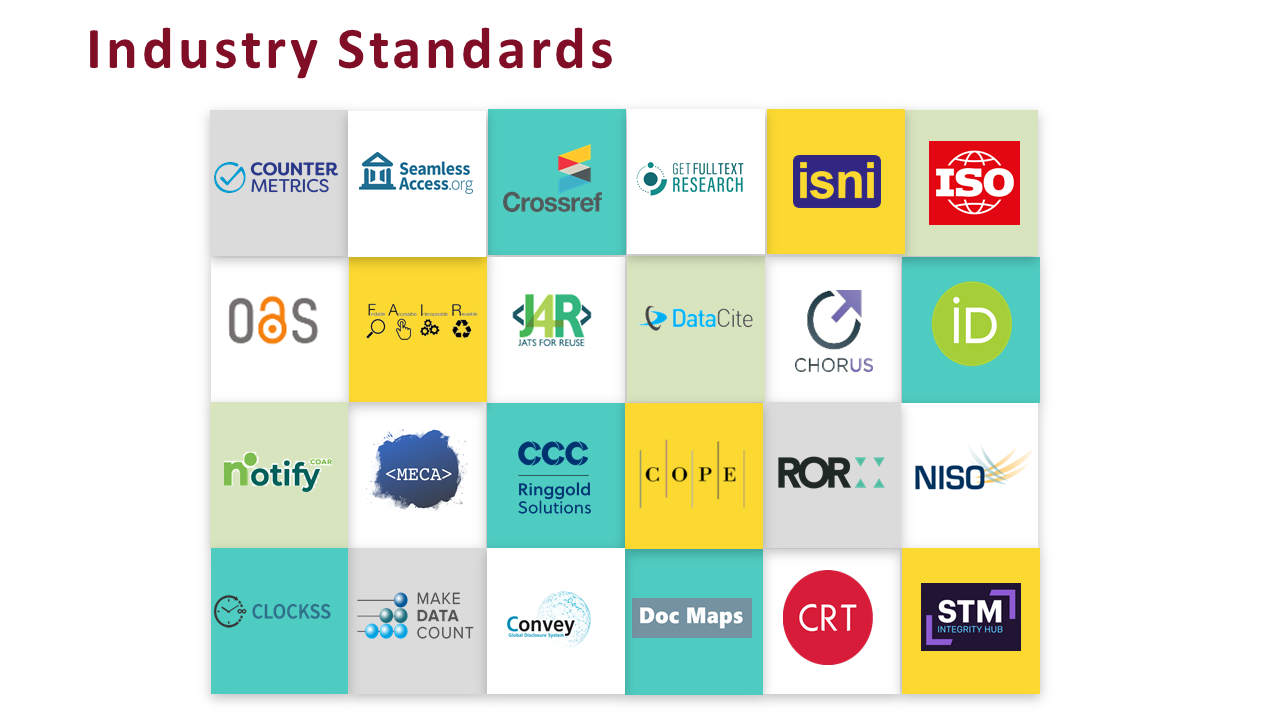
I also highlighted the vast commercial ecosystem that builds innovative tools such as author editing and translation services, peer review, technical checks, reference checking, taxonomy, commenting tools, promotion, and analytics. Our industry is also full of entrepreneurs who love to build new tools and services wherever they see a need. As technology evolves it presents us with new, more efficient ways to enhance content, to link content, to build knowledge graphs, to check for integrity issues, to expand reach, and in general to innovate for the common good of the scholarly communications industry.
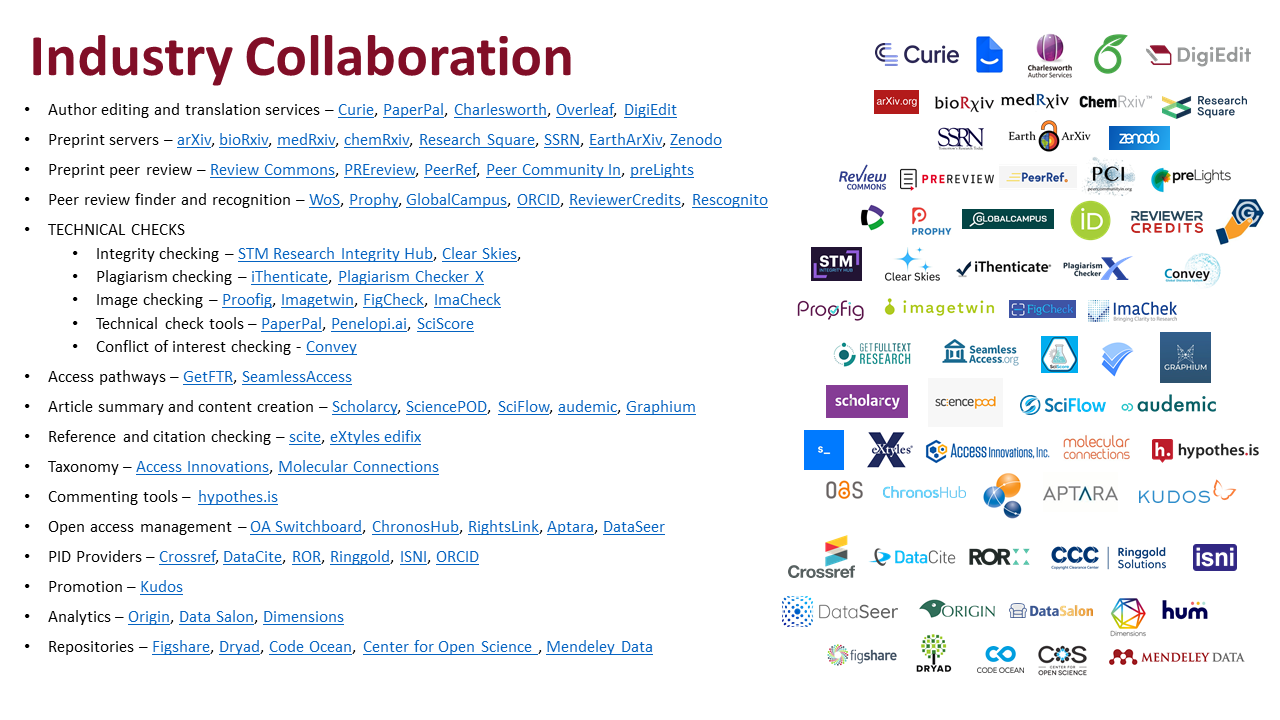
Be the industry standards or innovative products, they often come together to perform those important tasks within the ecosystem of a publishing workflow system, like HighWire’s new DigiCorePro (DCP). DCP is an end-to-end publishing workflow system that uses the concept of “single-source publishing”, along with an API-driven modular architecture, to integrate microservices and third-party tools, into a collaborative workflow ecosystem. For example, the collection of persistent identifiers, such as ORCID IDs, CRediT designation, organization ID’s, funding and grant ID’s – these can all be collected during the submission process and carried along in the metadata as the scholarly submission traverses the workflow.
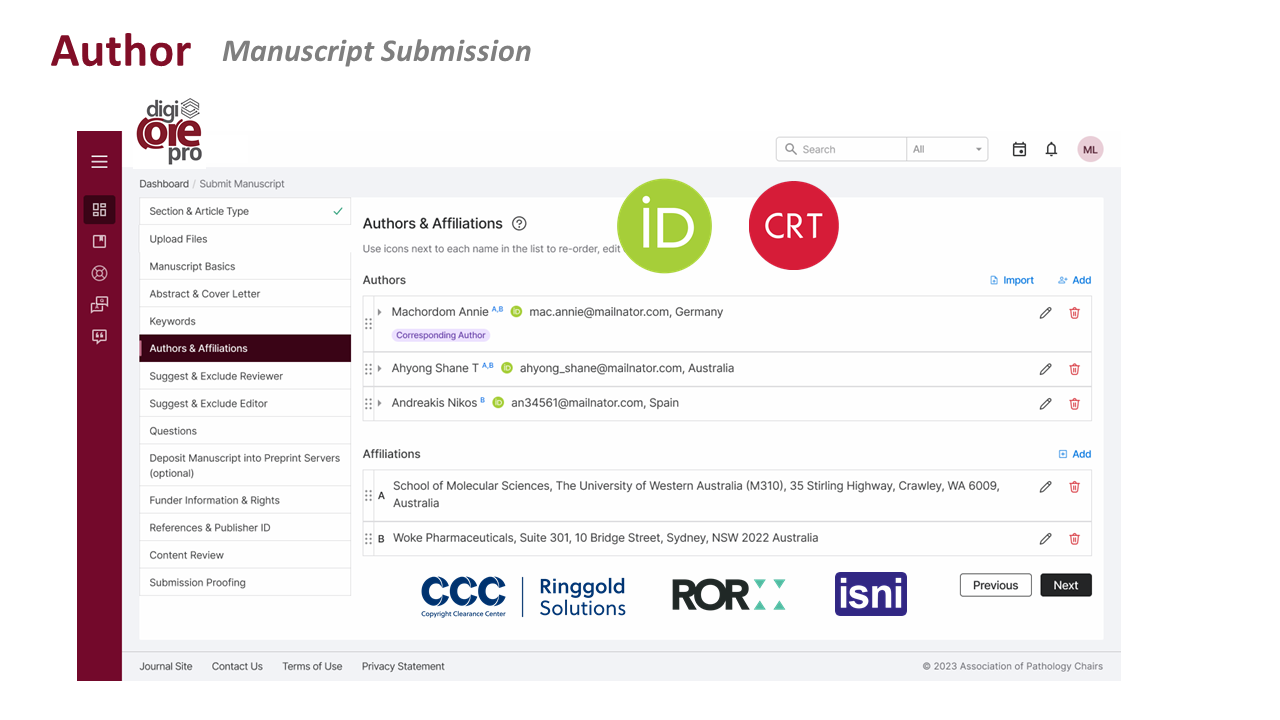
Similarly, tools that provide quality assurance and integrity checks (like plagiarism, papermill and image manipulation detection), systems that monitor industry compliance (such as funding disclosure and data deposit mandates), and products for content enhancement (like taxonomy builders, plain language summaries, and citation analysis), are all integrated into publishing workflow systems like DCP, enabling the editorial staff to quickly and easily assess and enhance scholarly content as it moves through the workflow. All of these working together to benefit the scholarship.
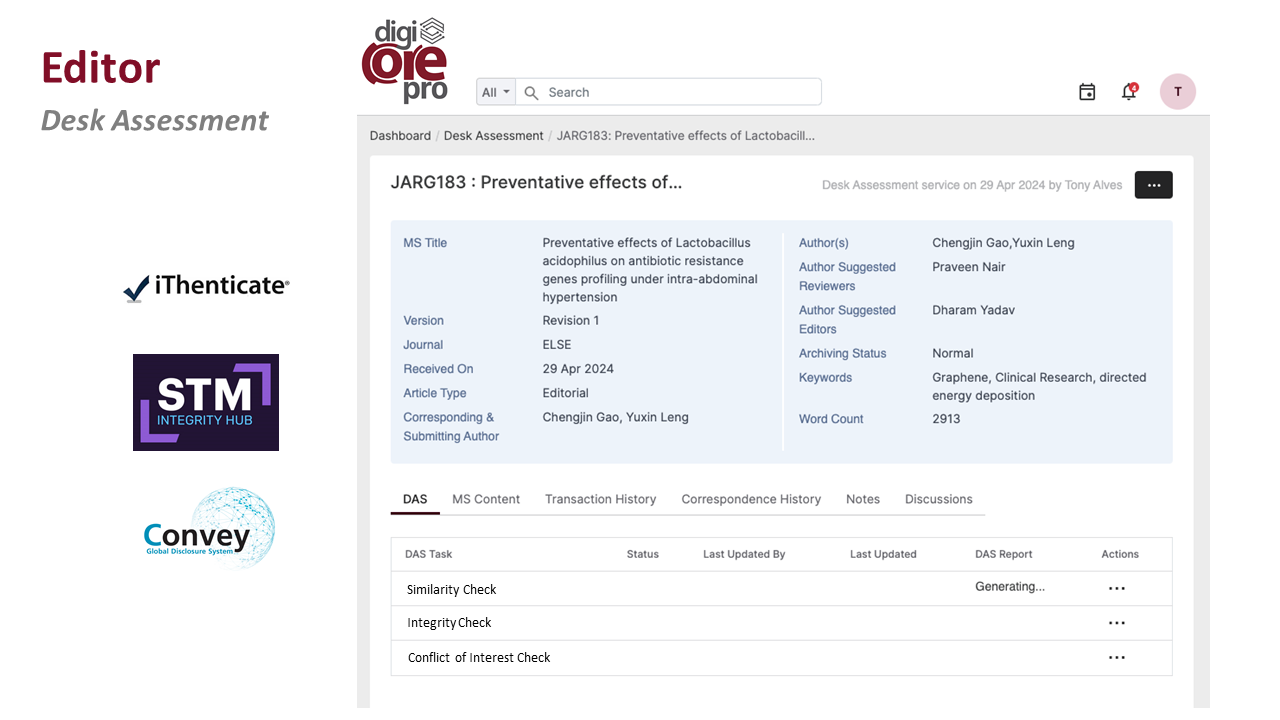
Workflow systems are bringing together solutions to urgent problems faced by the scholarly publishing industry. For example, there is a reviewer crisis, and we need to diversify and professionalize our reviewer pool. Systems like DCP help by assisting editors and editorial staff in building their author and reviewer pools through the integration of databases and products that expand outreach to researchers, bringing those researchers into a collaborative environment. It is easier than ever before to reach beyond the editor’s own network to bring in scholars from throughout the world and engage them in the publishing process.
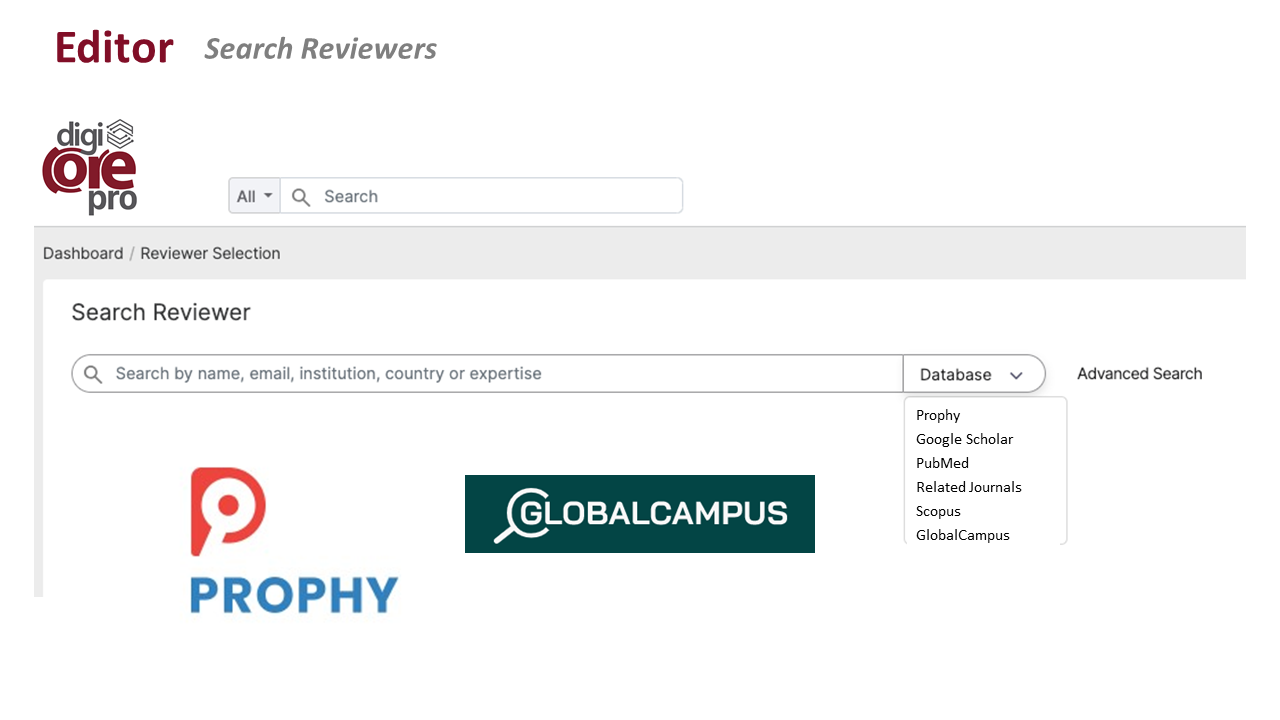
Following are a series of presentations made by my esteemed community representatives talking about how they help build the scholarly community through collaboration by integrating into the scholarly workflow.
Chris Shillum – ORCID
Chris Shillum, Executive Director of ORCID, emphasized the critical role of persistent identifiers (PIDs) in enhancing the integrity and transparency of scholarly work. ORCID provides a unique identifier for researchers, enabling them to manage their scholarly identity and ensuring accurate attribution of their work.
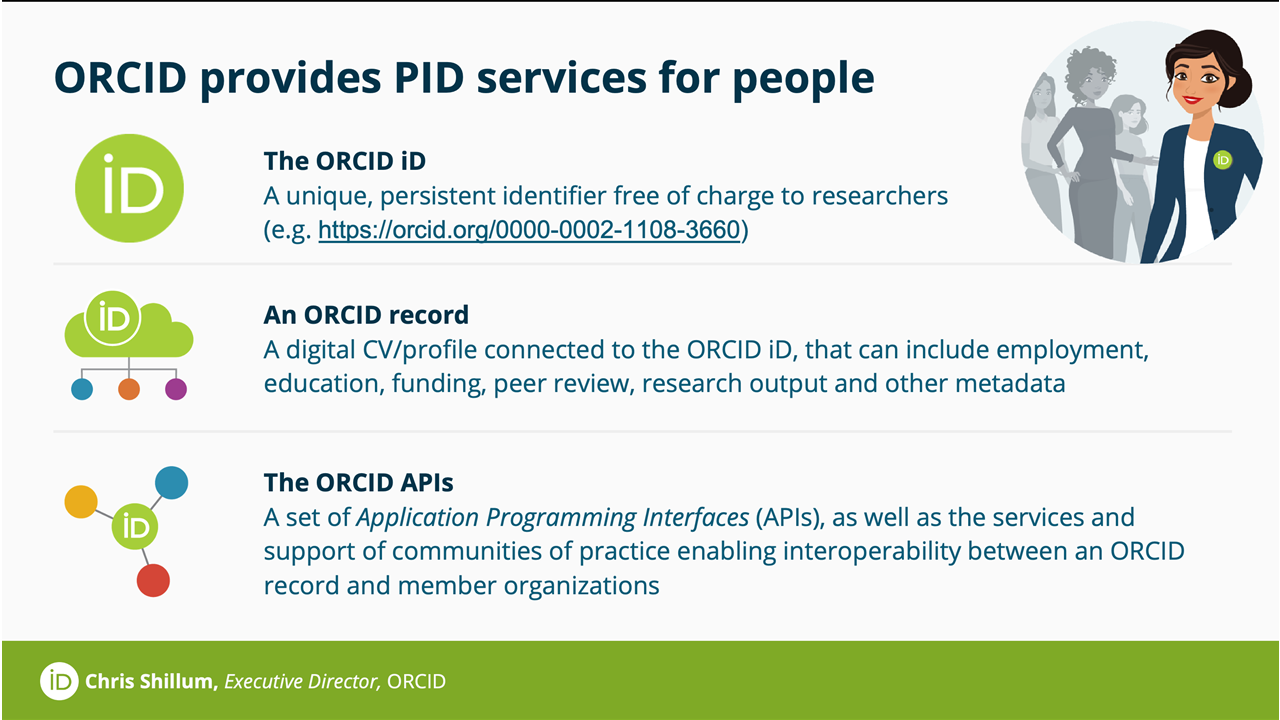
ORCID Integration and Benefits
Shillum demonstrated how ORCID integrates with various platforms, reducing the administrative burden on researchers and institutions. By linking researchers’ ORCID iDs to their publications, grants, and other scholarly outputs, ORCID ensures that their contributions are accurately recorded and recognized. This integration facilitates the discovery of researchers’ work and enhances collaboration by providing a comprehensive and accessible profile of their scholarly activities.
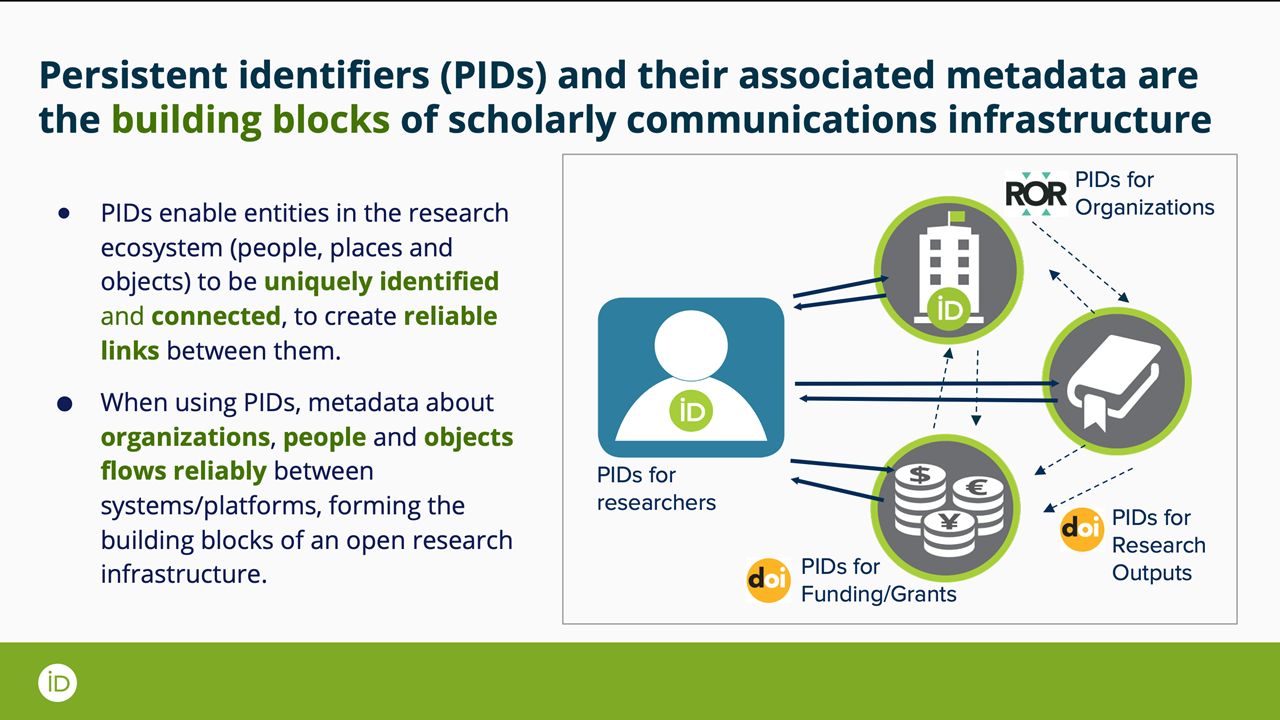
Use Cases and Examples
Shillum provided several examples of how ORCID is used in the scholarly publishing ecosystem. For instance, publishers use ORCID to streamline the submission process by automatically populating author details, reducing the need for manual data entry. Funders use ORCID to track the outcomes of funded research, ensuring that they can accurately report on the impact of their investments. Institutions use ORCID to manage researchers’ profiles and support internal reporting and assessment processes.
He also highlighted ORCID’s role in peer review, where reviewers can link their reviews to their ORCID iD, receiving recognition for their contributions. This transparency in the peer review process enhances trust and encourages more researchers to participate in peer review.
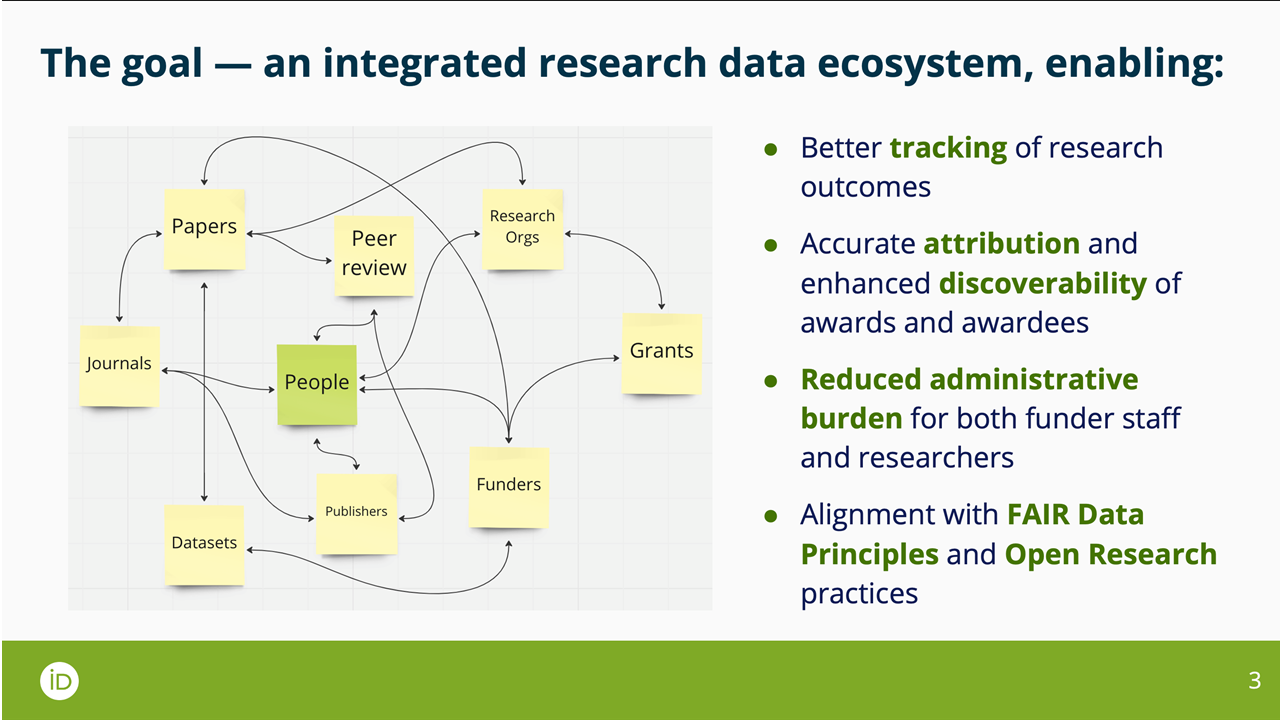
The ORCID Certified Service Provider (CSP) program promotes a collaborative trust network by ensuring service providers meet best-practice criteria across five scholarly workflows: Manuscript Submission Systems, Research Information Systems, Grant/Facility Application Management Systems, Repository Systems, and Discovery Systems. Organizations using a CSP benefit from out-of-the-box ORCID-related functionality, eliminating the need for custom development, providing a consistent user experience, and offering vendor support. Vendors offering CSPs gain enhanced promotion from ORCID, including website listing, member recommendations, an ORCID CSP Badge, and certification letters for proposals, along with advanced reporting and support from ORCID. This program simplifies ORCID integration and enhances the efficiency and reliability of scholarly communications.
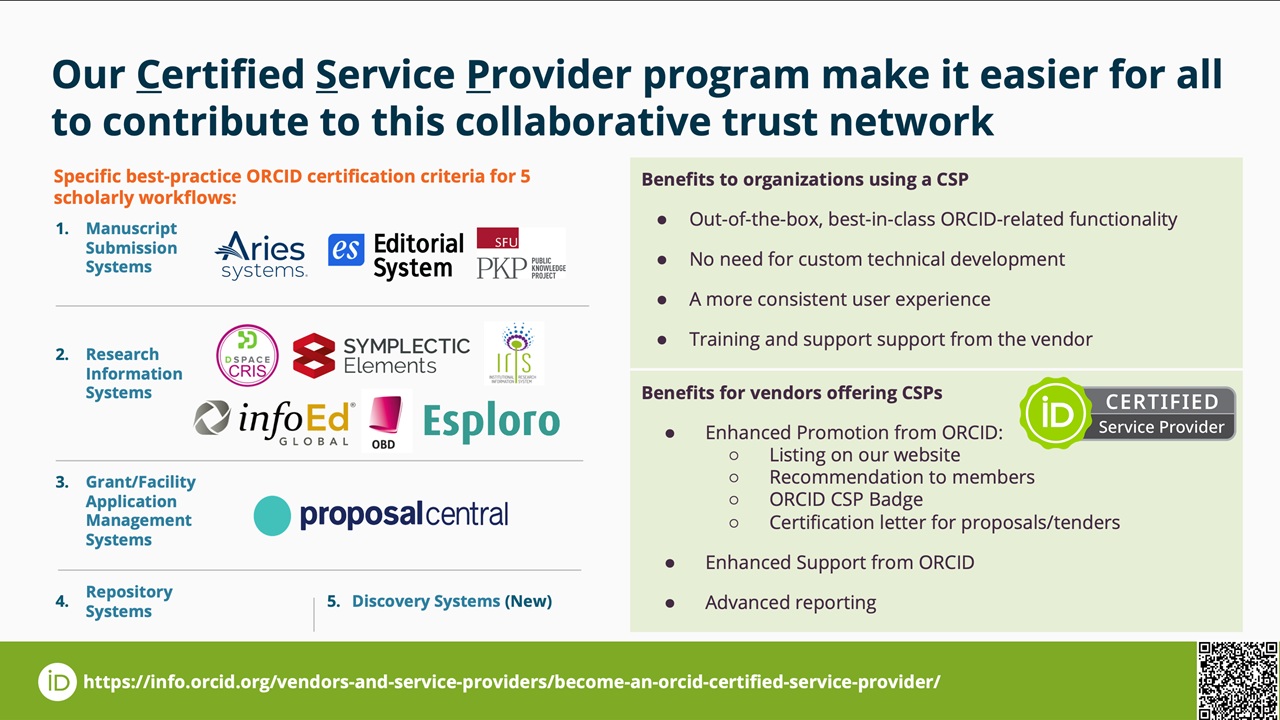
Dukhbhanjan (DK) Sujlana – Convey
DK Sujlana, Director of Convey, introduced the Convey system, a web-based platform for maintaining a private repository of financial interests and relationships. Convey supports individuals and organizations by simplifying the disclosure process, enabling users to disclose information to multiple organizations without re-entering data.
Features and Functionality
Sujlana explained that Convey allows individuals to create and maintain a private repository of their financial interests and other relationships. This repository can be used to disclose information to any organization that uses Convey, streamlining the disclosure process and ensuring that individuals only need to enter their information once.
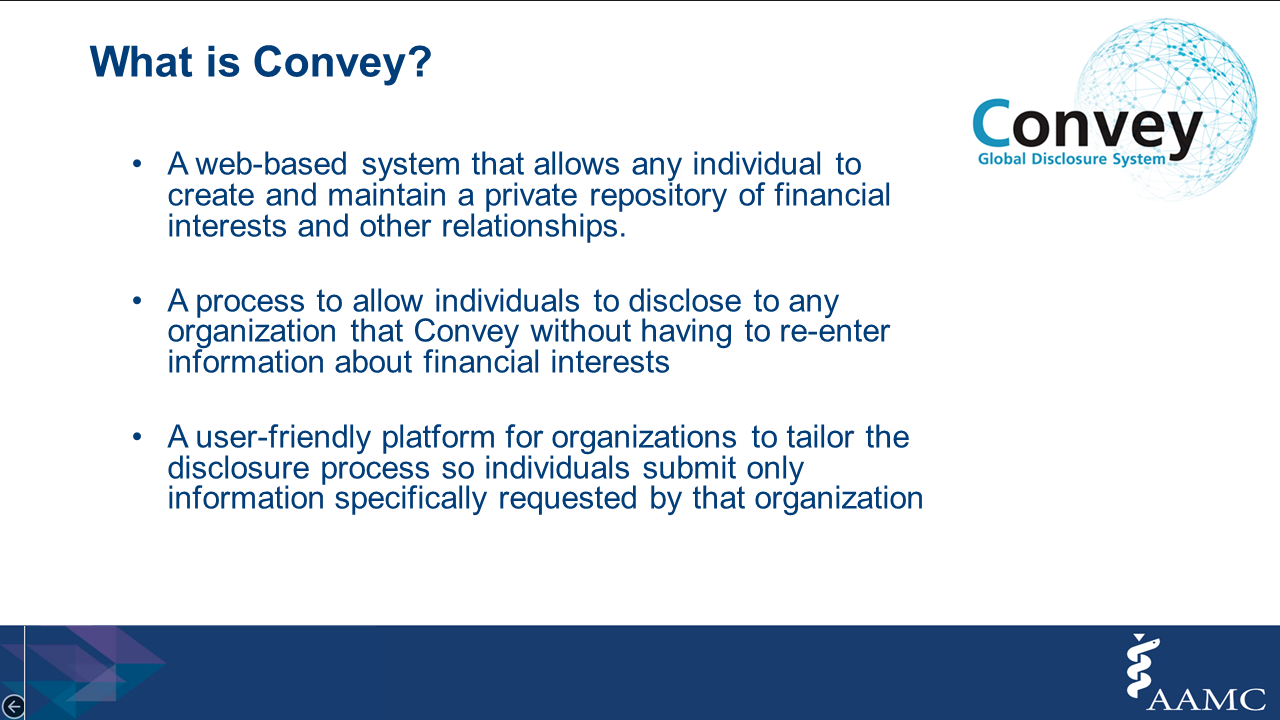
She provided examples of how Convey is used by academic institutions for annual disclosures, research grants, and continuing medical education (CME) within universities. Societies use Convey for board disclosures, clinical guideline committees, conferences, and governance committees. Publications use Convey for author, reviewer, and editor disclosures, ensuring transparency and compliance with conflict of interest policies.
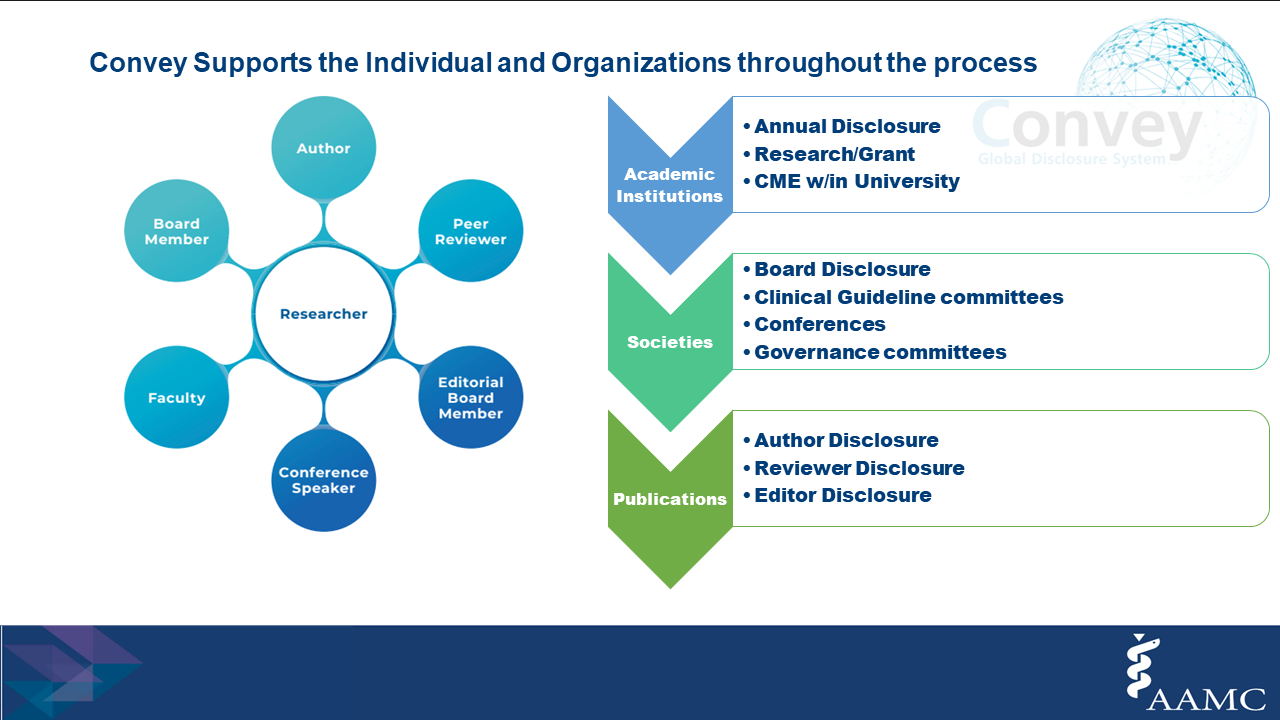
Implementation and Impact
Sujlana discussed the history of Convey, tracing its development from the 2009 Institute of Medicine report on conflict of interest in medical research, education, and practice, through various stages of stakeholder engagement, working group discussions, and pilot implementations. She highlighted the platform’s impact on improving transparency and trust in the scholarly publishing process, citing its widespread adoption and positive feedback from users.
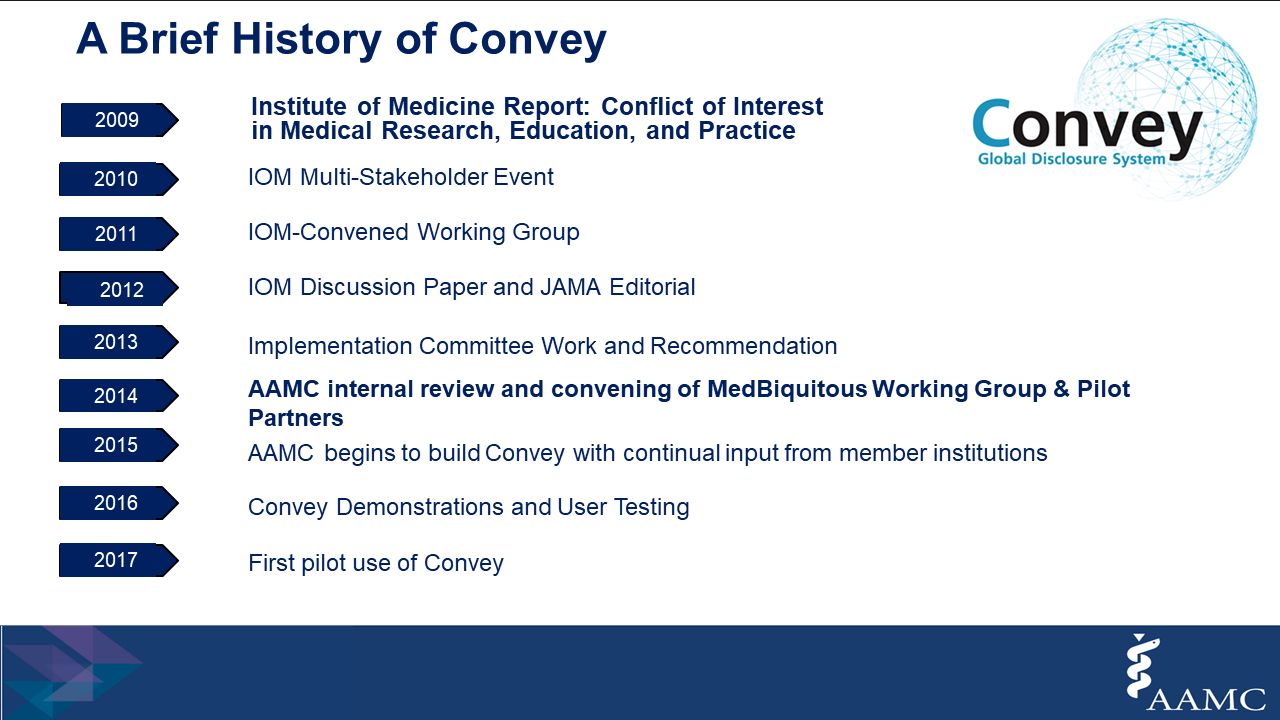
Convey has amassed over 175,000 users and facilitated more than 300,000 disclosures. It supports over 50 STM clients, serving a variety of units within organizations, and has processed disclosures from over 13,000 individuals submitted to multiple organizations. The annual growth chart shows a significant increase in both users and disclosures from 2018 to 2023. Convey integrates with many workflow systems.
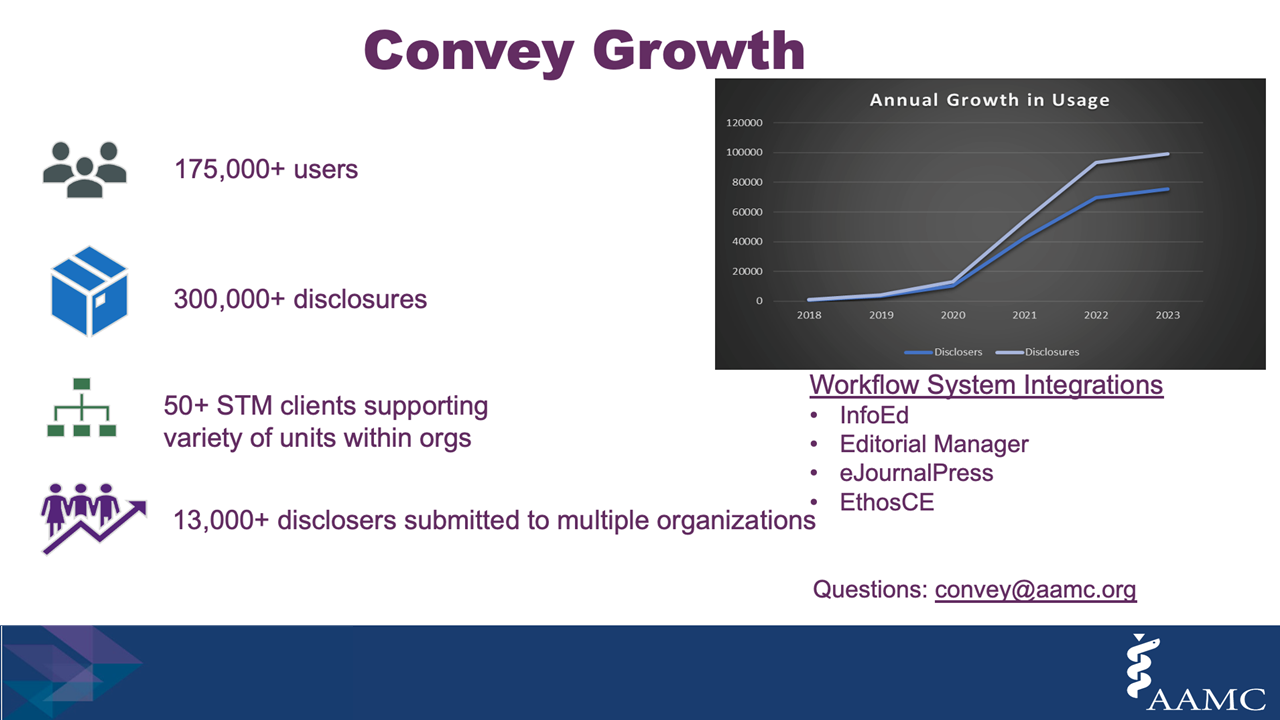
Yvonne Campfens – OA Switchboard
Yvonne Campfens, Executive Director of OA Switchboard, presented the OA Switchboard as a mission-driven, community-led initiative designed to simplify the sharing of open access publication information among stakeholders, including funders, institutions, and publishers.
Purpose and Functionality
Campfens explained that the OA Switchboard acts as a centralized metadata exchange hub, with the possibility for standardized publisher data sent via OA Switchboard to be automatically fed into multiple destinations. This reduces the complexity and administrative burden associated with managing multiple systems and processes. She emphasized that the OA Switchboard promotes simplicity, transparency, efficiency, and cost-effectiveness.
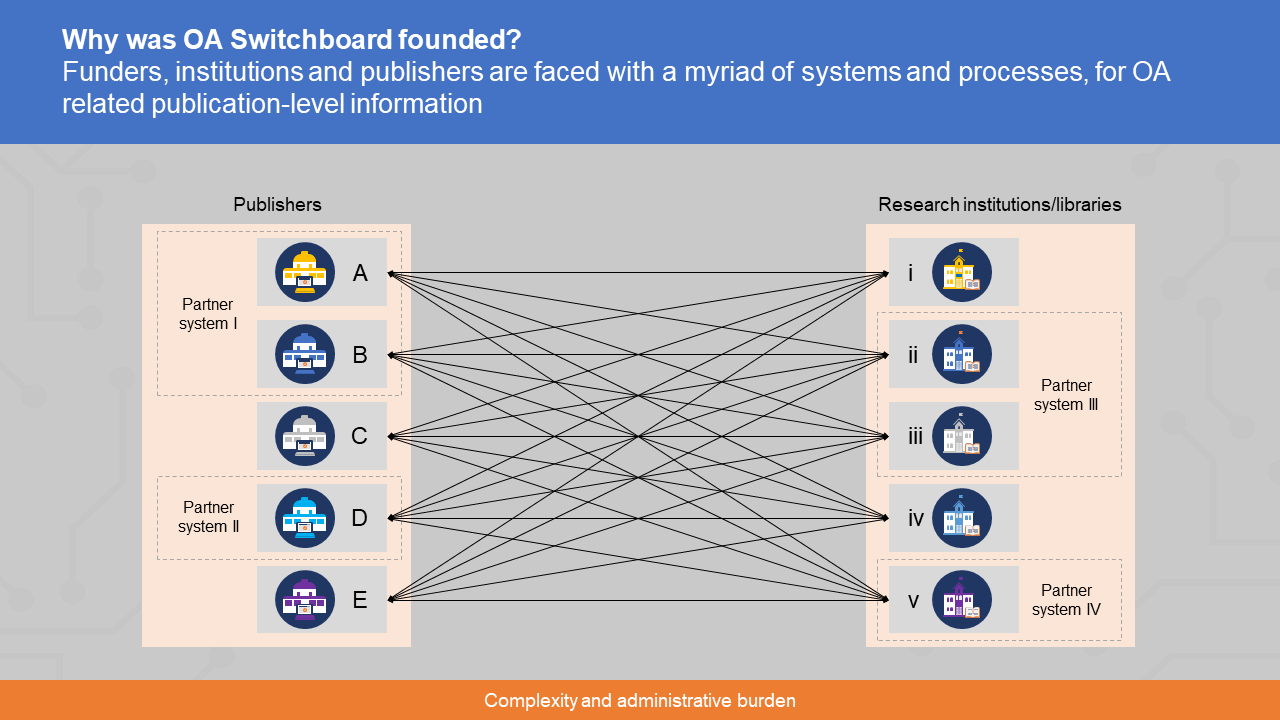
Examples and Use Cases
Campfens provided examples of how the OA Switchboard facilitates the sharing of information. For instance, a publisher can use the OA Switchboard to automatically notify research funders, institutions, and consortia when an open access article is published, ensuring that all relevant stakeholders are informed in a timely manner. This streamlines the reporting process and Supports compliance with open access policies.
She also highlighted the benefits of the OA Switchboard for research institutions and libraries, which can use the hub to manage their open access agreements and monitor compliance with funder requirements. The OA Switchboard supports a wide range of use cases, from tracking publication costs to managing institutional repositories.
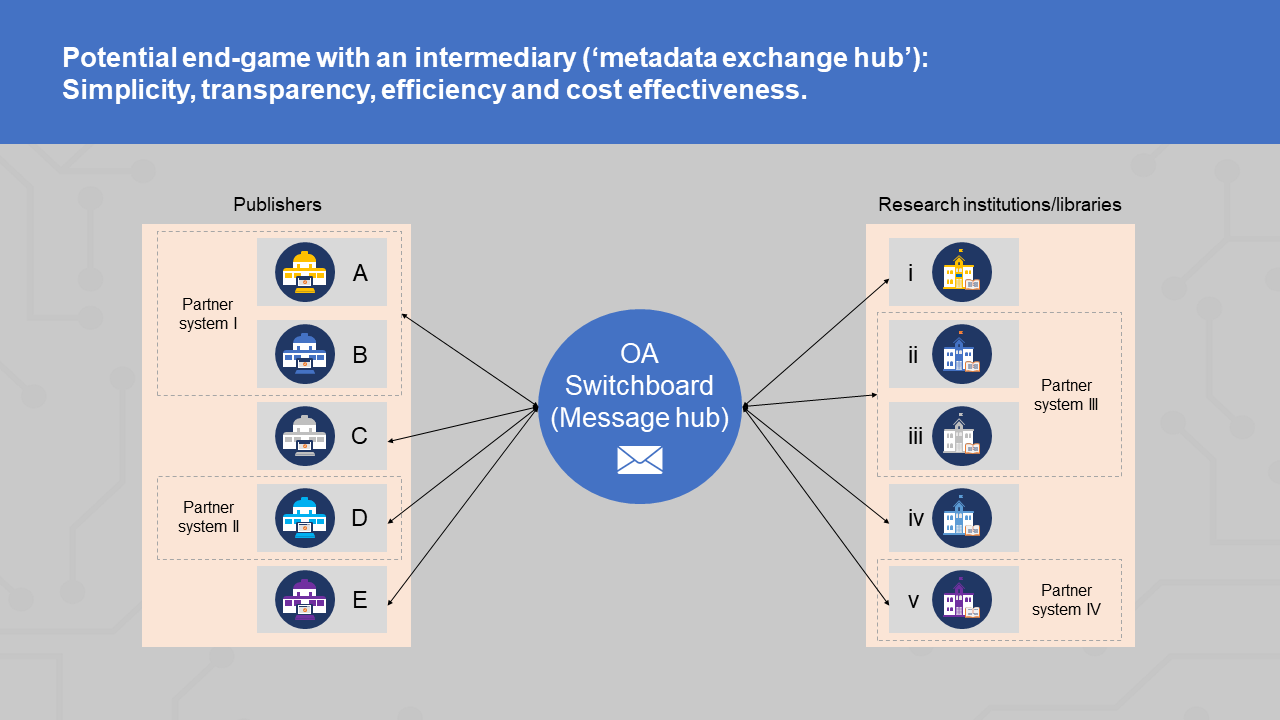
Community and Collaboration
Campfens emphasized that the OA Switchboard is a community-driven initiative, with participation from a diverse range of stakeholders. She highlighted the hub’s commitment to building trust, promoting collaboration, and enhancing efficiency within the scholarly publishing ecosystem. By providing an open infrastructure and fostering a sense of community, the OA Switchboard supports the collective goal of advancing open access publishing.
Hylke Koers – STM Solutions
Hylke Koers, Chief Information Officer of STM Solutions, discussed the STM Integrity Hub, an initiative designed to protect research integrity by equipping the scholarly communication community with data, intelligence, and technology.
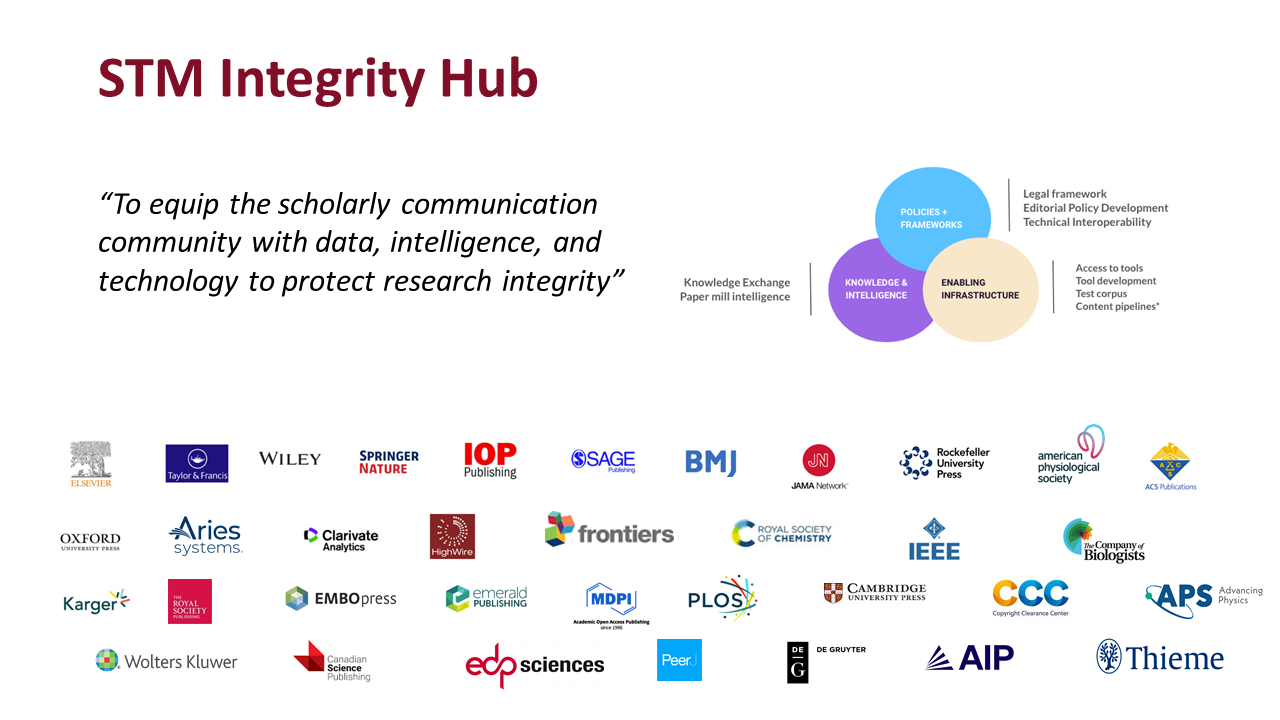
Purpose and Impact
Koers explained that the STM Integrity Hub integrates data from multiple sources to provide a comprehensive view of research integrity issues. The hub connects with external databases and tools such as PubPeer, Clear Skies, and Retraction Watch, allowing publishers to screen manuscripts for issues like papermill activity, duplicate submissions, and other forms of misconduct.
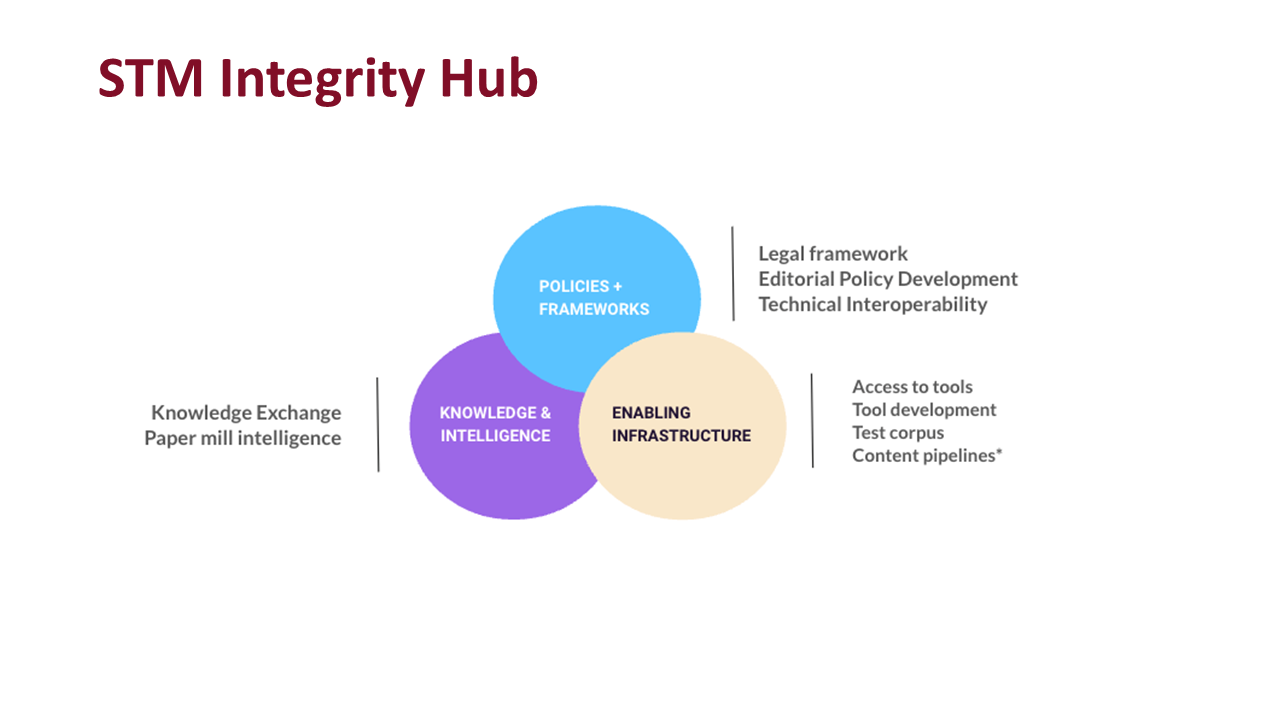
Statistics and Adoption
Koers shared statistics on the hub’s impact, noting that 35 publishers and other organizations participate in the initiative, with 8 integrations with external databases and tools. The hub screens approximately 20,000 manuscripts per month, helping to detect and prevent unethical practices. Koers highlighted the involvement of over 100 individuals in working groups, task forces, and the governance board, demonstrating the broad support and engagement within the scholarly community.
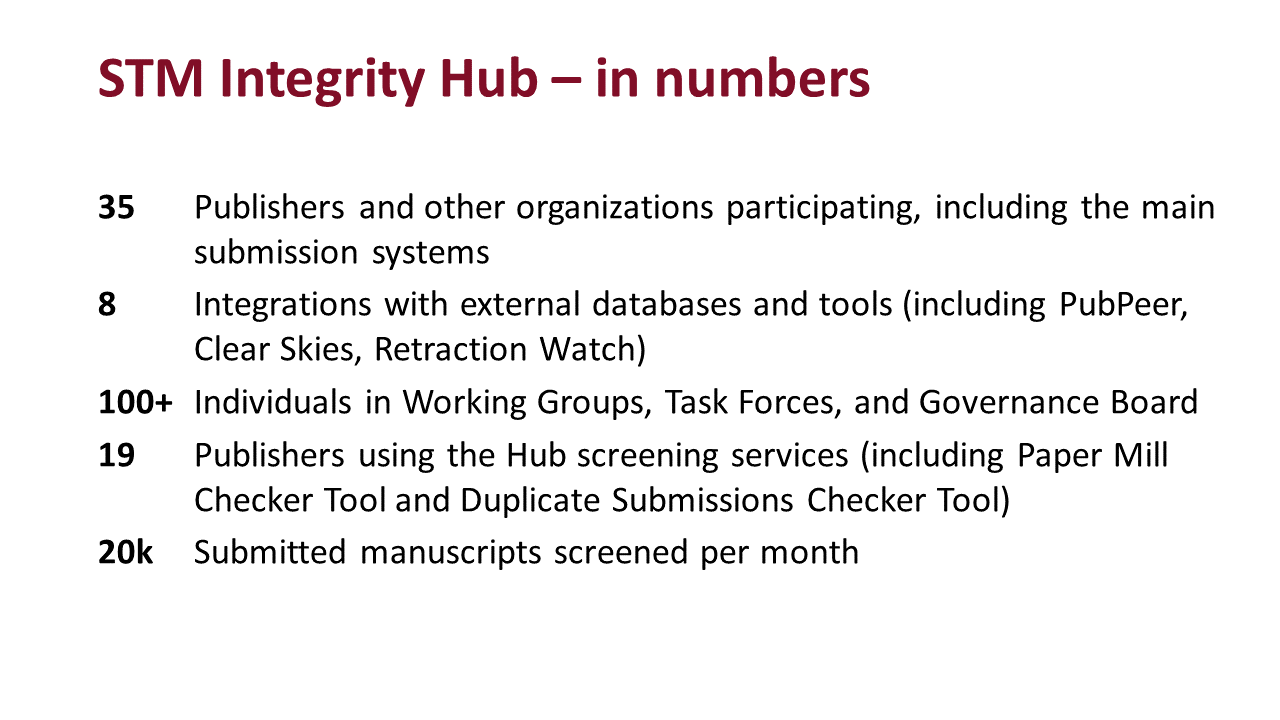
Examples and Use Cases
Koers provided examples of how the STM Integrity Hub is used in practice. For instance, a publisher can use the hub’s screening tools to detect potential issues with a manuscript before it goes through peer review or is accepted for publication. This proactive approach helps maintain the integrity of the scholarly record and ensures that published research is trustworthy and reliable.
He also discussed the hub’s role in fostering collaboration among stakeholders. By providing a centralized platform for sharing data and insights, the STM Integrity Hub promotes a collaborative approach to addressing research integrity challenges. This collective effort helps build a stronger and more resilient scholarly publishing ecosystem.
Jessica Thibodeau – Copyright Clearance Center
Jessica Thibodeau, Senior Director of Information & Content Solutions at Copyright Clearance Center (CCC), presented the CCC Scholarly Communications Suite, a holistic, data-driven suite of tools that leverage persistent identifiers and supporting metadata to accelerate deal modeling and reliably manage APCs and OA agreements.
Features and Functionality
Thibodeau explained that the CCC Scholarly Communications Suite encompasses various technologies designed to support different stages of the publication process, from pre-submission to post-publication. The suite, which includes Ringgold Solutions, RightsLink for Scientific Communications, and OA Intelligence, offers:
- AI-enabled Affiliation Disambiguation
- Persistent Identifiers for Organizations
- OA Workflow Management
- Standardized Reporting & Collaboration Tools
- Modeling & Analytics
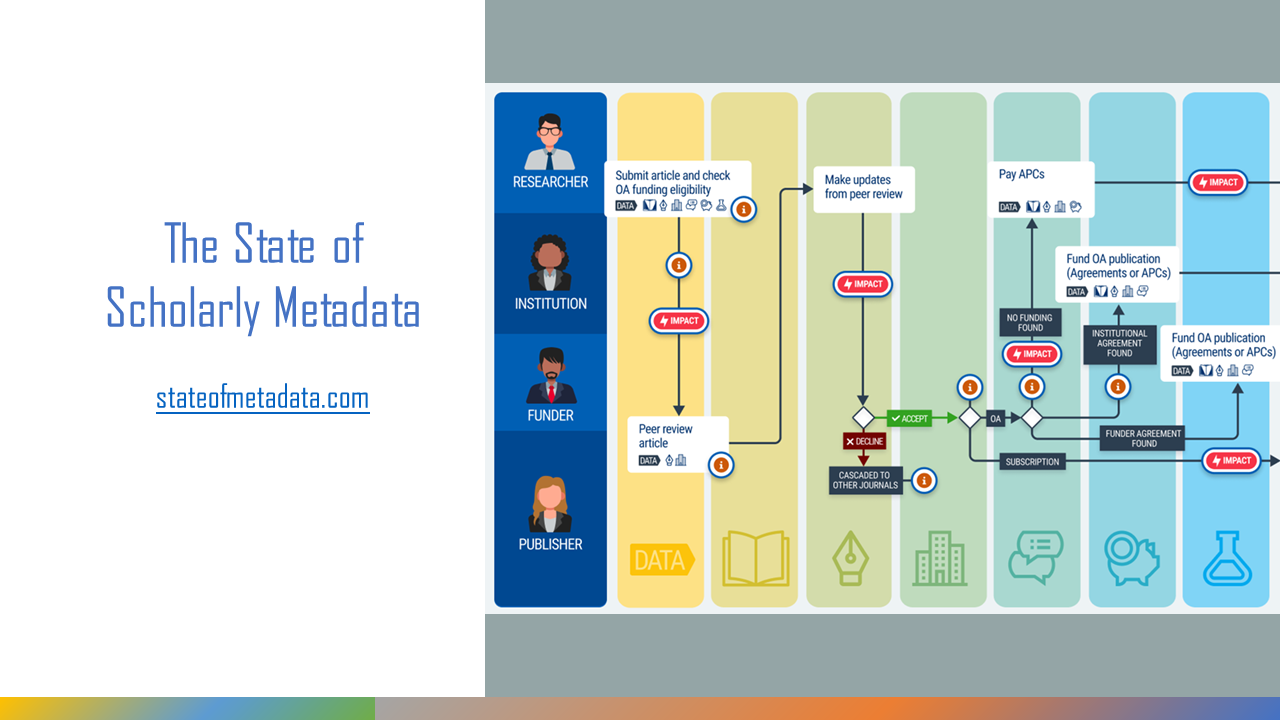
Examples and Use Cases
Thibodeau provided examples of how the CCC Scholarly Communications Suite enhances the scholarly publishing process. For instance, the organization data held in the Ringgold Identify Database powers standardized methods for capturing author affiliation information, which is critical for enabling key use cases, including:
- Informing funding eligibility under OA agreements.
- Supporting the creation, modeling, and analysis of new, sustainable OA models.
- Identifying potential conflicts of interest, bad actors, and other integrity concerns.
- Enabling more accurate reporting around research output and related impact.
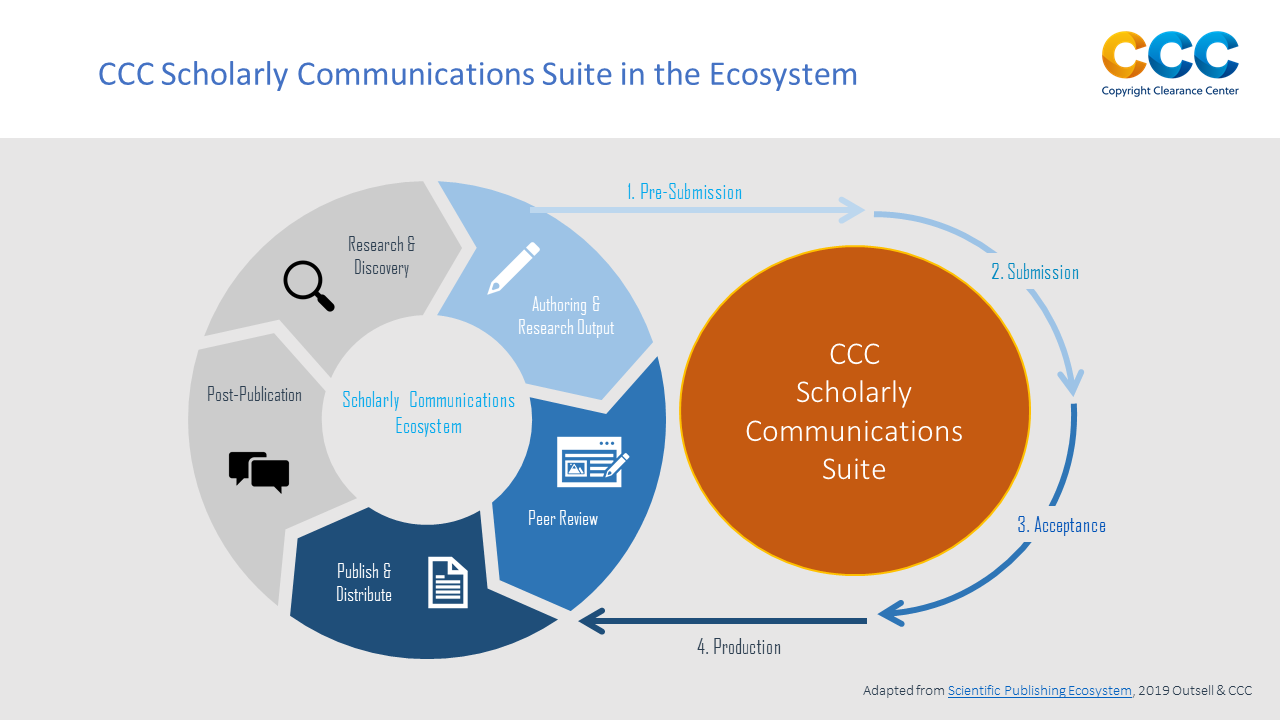
She also highlighted the suite’s role in enhancing data interoperability and streamlining workflows. By integrating with other systems and platforms, the CCC Scholarly Communications Suite can ensure that data is accurately captured and seamlessly integrated into publishing workflows, reducing administrative burden, and improving accuracy and efficiency.
Statistics and Impact
Thibodeau shared statistics on the adoption and impact of CCC’s Ringgold Identify Database. She noted that Ringgold supports over 620,000 organization records and corresponding PIDs, with granular organization hierarchies and more than 30 descriptive metadata elements. This extensive data management capability enhances the reliability of the data that powers scholarly communications.
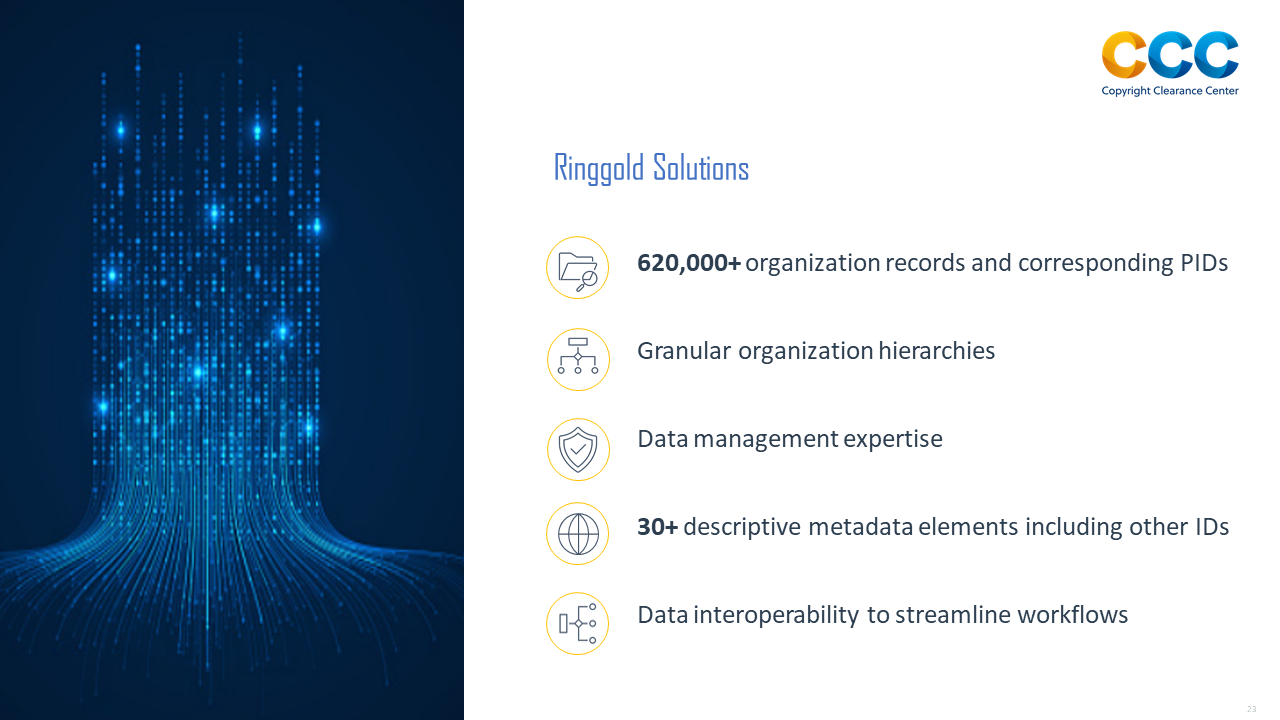
Oleg Ruchayskiy – Prophy Science
Oleg Ruchayskiy, Co-founder of Prophy Science, showcased Prophy’s advanced reviewer search and conflict of interest detection systems, which leverage big data and AI technologies to enhance the scholarly publishing process.
Features and Functionality
Ruchayskiy explained that Prophy uses digital fingerprints to match researchers with relevant manuscripts. The system generates digital fingerprints for researchers based on their publication history, enabling it to identify experts with similar profiles to a given manuscript. This approach ensures that reviewers are well-matched to the content they are reviewing, enhancing the quality and reliability of peer review.
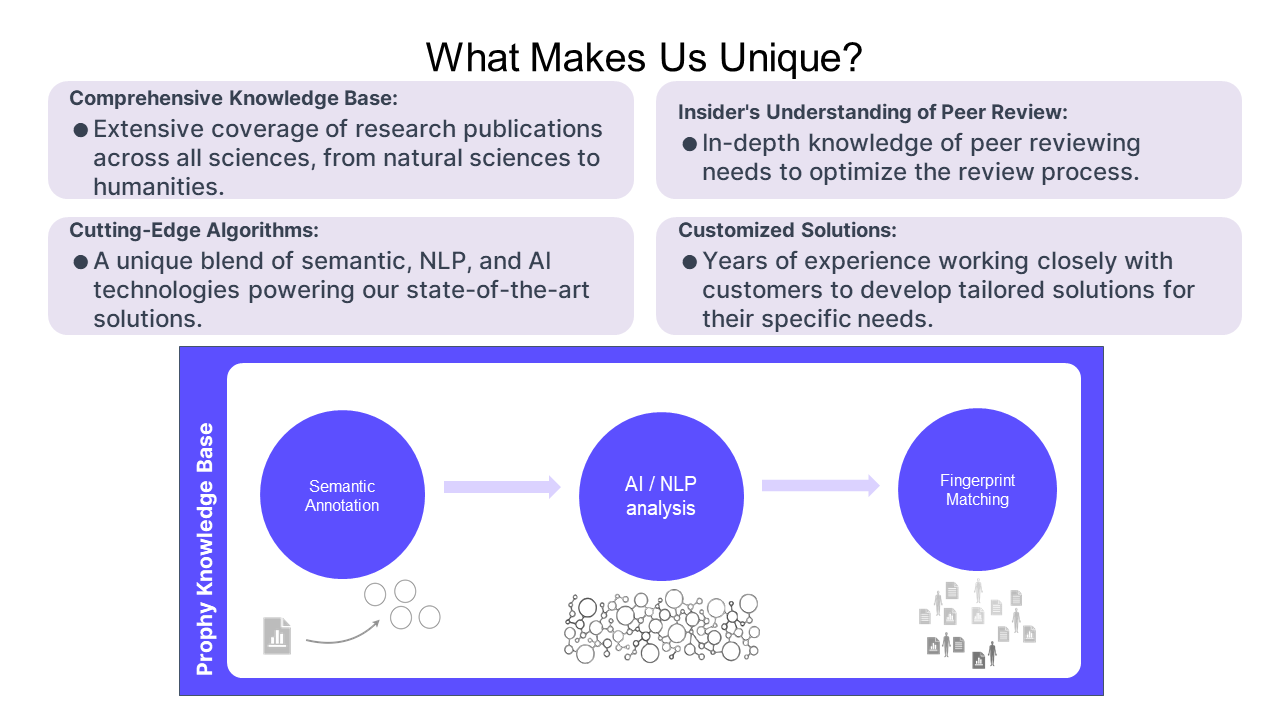
Examples and Use Cases
Ruchayskiy provided examples of how Prophy’s systems are used in practice. For instance, a journal editor can use Prophy to quickly identify potential reviewers for a manuscript, reducing the time it takes to find qualified reviewers. The conflict of interest detection system ensures transparency by identifying potential conflicts of interest, helping to uphold ethical standards.
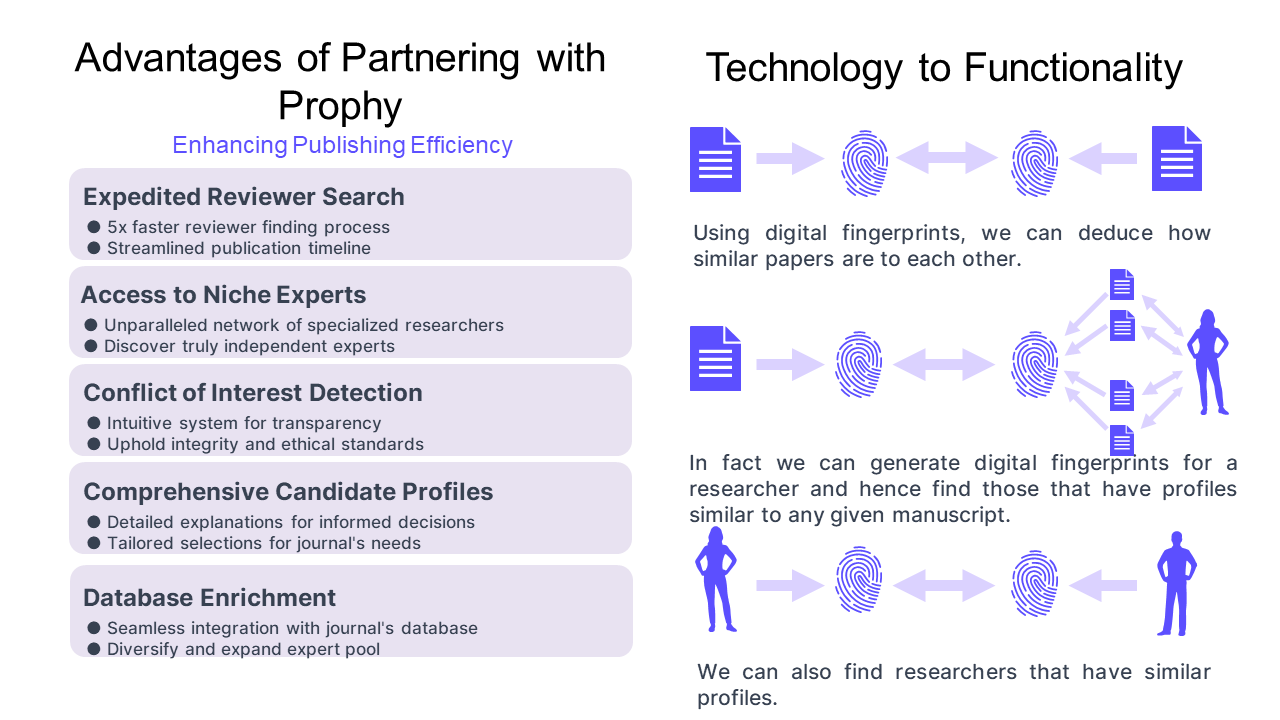
He also discussed upcoming features such as on-the-fly fraud detection and reviewer availability tracking, which will further enhance the integrity and efficiency of the peer review process. Ruchayskiy highlighted the benefits of Prophy’s comprehensive candidate profiles, which provide detailed information about reviewers, enabling informed editorial decisions.
Statistics and Impact
Ruchayskiy shared statistics on Prophy’s impact, noting that the platform supports a database of 166 million papers, 78 million authors, 140,000 journals, 104,000 institutions, and 130,000 concepts. This extensive knowledge base enables Prophy to provide accurate and reliable matching and conflict detection services.
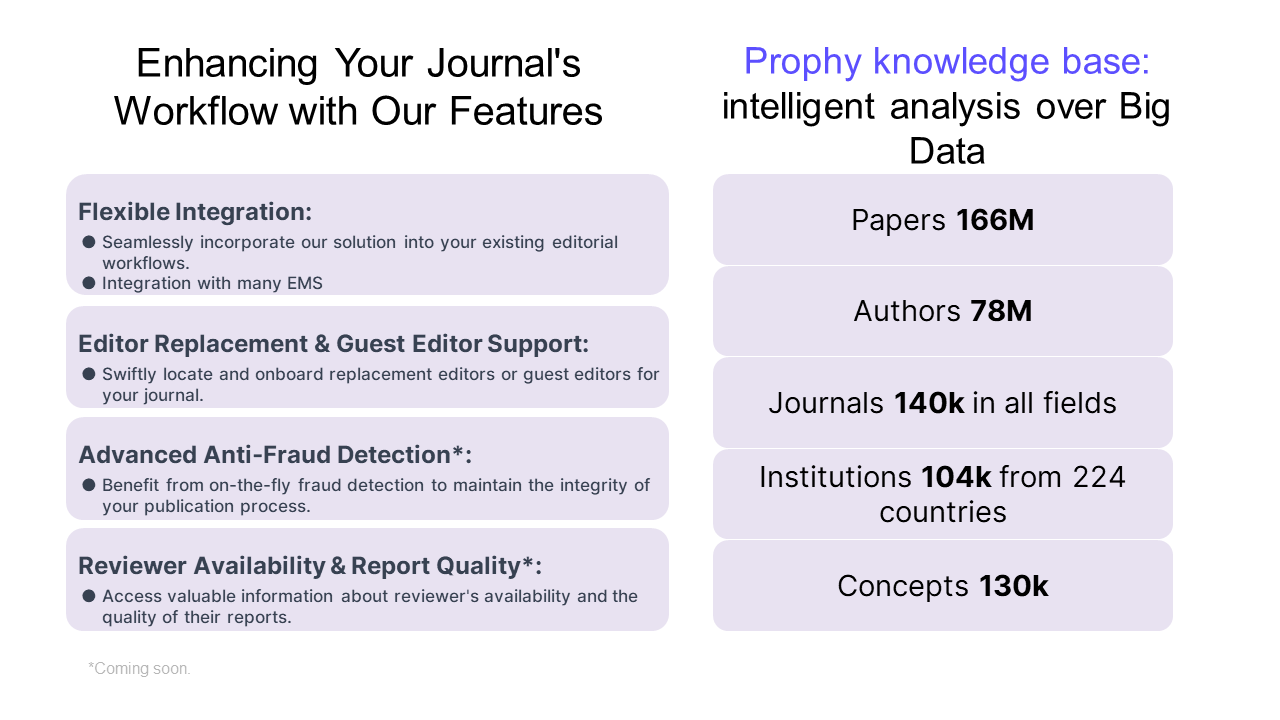
Conclusion
The SSP 2024 Industry Breakout Session that I organized highlighted the collaborative nature of the scholarly publishing industry, demonstrating how integrated tools and community-driven initiatives can streamline processes, enhance transparency, and uphold the integrity of research publications. The presentations covered a diverse range of solutions supporting various stages of the publication process, from authoring and peer review to publication and post-publication management. These tools and platforms foster a more efficient and trustworthy scholarly communication ecosystem, ultimately advancing the dissemination and impact of research.
The session underscored the importance of community and collaboration in scholarly publishing, showcasing how industry standards and technological advancements can support stakeholders in maintaining the integrity and quality of scholarly communications. The examples and use cases provided by the presenters illustrated the practical benefits of these tools, highlighting their impact on enhancing efficiency, transparency, and trust within the scholarly publishing ecosystem.
– By Tony Alves
